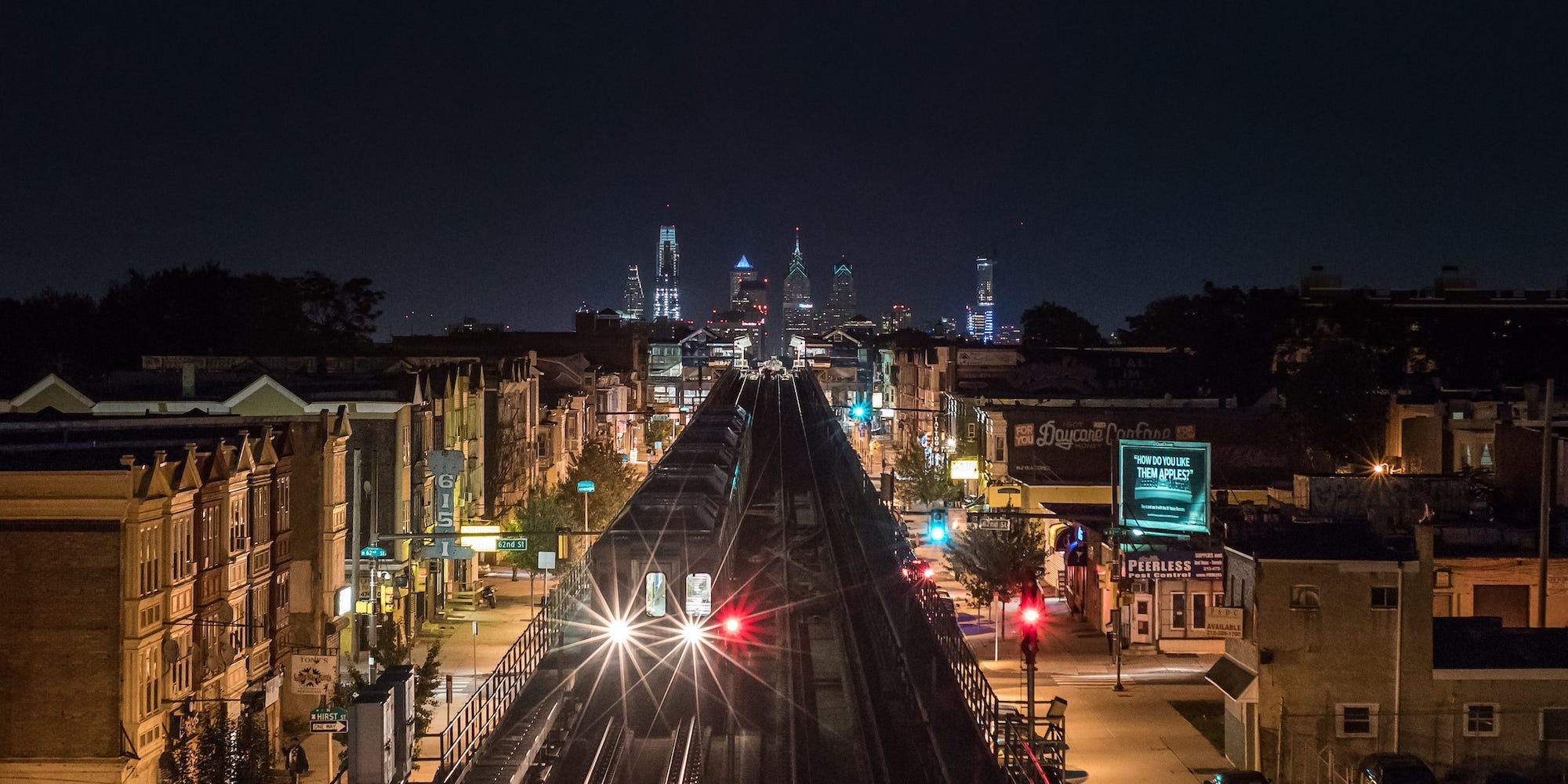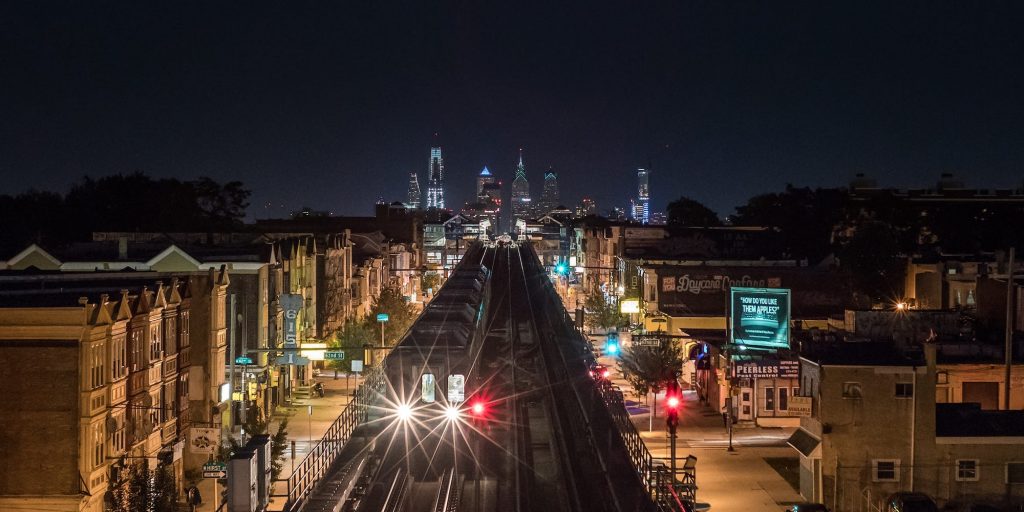
Michael Lee/Getty Images
- A woman was raped on a train near Philadelphia last week while several passengers looked on, local authorities said.
- The witnesses' perceived lack of action has sparked outrage and criticism.
- But experts in bystander intervention told Insider that people's reasons for not acting are likely nuanced.
The rape of a woman on public transportation near Philadelphia last week has sparked national outrage and indignation, not only toward the person charged with the crime, but toward the multiple passengers who witnessed the assault and did not intervene.
Surveillance footage from the Southeastern Pennsylvania Transportation Authority (SEPTA) train on the evening of October 13, shows a man boarding the westbound train and sitting next to the unnamed woman. Moments later, the alleged perpetrator began to touch her and grab her breast, according to charging documents. He then proceeded to "rip her clothes off" and sexually assault her, documents say.
Several fellow passengers looked on during the 8-minute attack, police officials said this week, which was stopped after an off-duty female SEPTA employee called 911.
The witnesses' lack of action has drawn sharp criticism, particularly from Timothy Bernhardt, superintendent of the Upper Darby Township Police Department, who said he was "appalled" by their apparent apathy.
"I don't know where we are in society that people can't help other people out in a time of need," he told The Washington Post.
But two experts in bystander intervention said the reasons behind people's inaction are almost always more nuanced than pure indifference.
"We're all bystanders. We see something that makes us uncomfortable and we feel we should do something," Alan Berkowitz, an independent researcher and the author of "Response-Ability: A Complete Guide to Bystander Intervention," told Insider. "That's a human experience."
Berkowitz, a licensed psychologist who conducts bystander intervention trainings, said research shows that most people want to intervene in problematic situations and most of the time, do.
So, how then is a crime like Wednesday's horrific train rape able to persist in front of multiple witnesses?
Psychological or situational barriers
Psychological and situational barriers, as well as barriers related to physical size, may stop people who want to intervene from actually doing so, Berkowitz told Insider.
"One could be, you think someone else is going to do something," Berkowitz said. In the case of the SEPTA incident, the fact that multiple people had their smartphones out may have created a diffusion of responsibility, suggesting to individuals that someone else had already called the police.
Jane Stapleton, executive director of Practice Prevention Innovations Research Center at The University of New Hampshire, said the assault could be a real-life example of the bystander effect in action, which posits that the more people who witness a crime, the less likely someone is to intervene.
"I might look at the person sitting across from me and they look like they are going to intervene," said Stapleton, who is also president at Soteria Solutions, a nonprofit focused on preventing sexual harassment.
Another common barrier is fear. "You might think: I don't want to get beat up," Berkowitz said.
A person's gender, size, or strength may keep them from physically intervening out of a sense of self-protection. Immigration status, past traumas, economic considerations, language barriers, and criminal status are also factors that could influence an individual's ability to act, Berkowitz said.
"Sometimes people don't intervene because they have their own historical experiences," Stapleton said. "Maybe they've been assaulted or knows someone else who has. It could be triggering for them, so they sort of freeze."
A person's past experiences with police may also play a role.
"You're dealing with a particular group of people in a particular situation, so the explanation is very individualistic," he added. And because there is no personal information about the SEPTA witnesses currently available, Berkowitz warned that assuming the worst is unfair.
"We all agree it's a horrific incident," he said. "We're all shocked that nobody did anything. But we don't know enough details to analyze the situation."
Knowing the steps to intervene
Preparation is key in combating problematic or dangerous situations as a bystander, Stapleton said, and people are much more likely to step in if they have go-to tools to employ.
"You don't expect to see something like that happen on public transportation, so you're not necessarily prepared," she told Insider. "People need to be literally told how to intervene."
Educating individuals on how to handle such a situation spurs much of the work both Stapleton and Berkowitz do.
In bystander intervention training, there are four stages to reach a successful outcome, Berkowitz said.
- Notice the event
- Assess whether it is a problem
- Feel responsibility for dealing with it
- Have the skills to act
The first two steps are more relevant to lower-level incidents, such as a colleague uttering a microaggression or telling an offensive joke, according to Berkowitz.
"In [the SEPTA] situation, unless someone was not consciously present or emotionally impaired, they would have noticed it and interpreted it as a problem," he said.
Stapleton agreed, though she noted that the normalization of sexual assault in American culture could have played a role in witnesses' responses.
"Unfortunately it is normalized, and if a behavior is normalized, we're less likely to see it as problematic or think 'I should intervene,'" she said.
The extreme nature of the attack suggests the witnesses most likely found themselves stumped by stages three and four, Berkowitz said. If passengers believed someone else had already called 911 or were fearful for their own safety, they may have thought filming the assault to later give to authorities might be their only safe way to assist.
And on Thursday, Delaware County District Attorney Jack Stollsteimer clarified that none of the witnesses recorded video of the assault "for their own gratification" without contacting authorities.
Stollsteimer said there is security footage that suggests one of two people who may have recorded the rape on their phones "probably" did alert SEPTA of the attack afterward.
"You have to give people the benefit of the doubt," Berkowitz said. "Everyone should have done something, but could everyone have done something?"
Improving future outcomes
District Attorney Stollsteimer said Wednesday that the SEPTA passengers would not face criminal charges for failing to intervene in the assault, because state law does not allow for it.
Shaming people and making them afraid of punishment is rarely a successful tactic in improving future outcomes, Stapleton and Berkowitz both said.
"We need to take a step back and not be so judgemental on the people who didn't intervene, but think how can we create an environment where people feel they can intervene," Stapleton said.
Bystander intervention training can help people be prepared should they encounter situations that demand action in the future.
"An important step you can always take is to talk to other bystanders and see if they're also concerned," Berkowitz said. The next step is learning different intervention methods to provide options that can be used depending on the situation, whether it's creating a distraction or confronting the perpetrator.
"What you do depends on who you are in the situation, which is why you can't generalize," he added.
Berkowitz also warned against assuming the worst in others.
"The conclusion is we've become this terrible society where nobody cares anymore and people let horrible things happen to others," he said. "I don't think that's the right conclusion."
